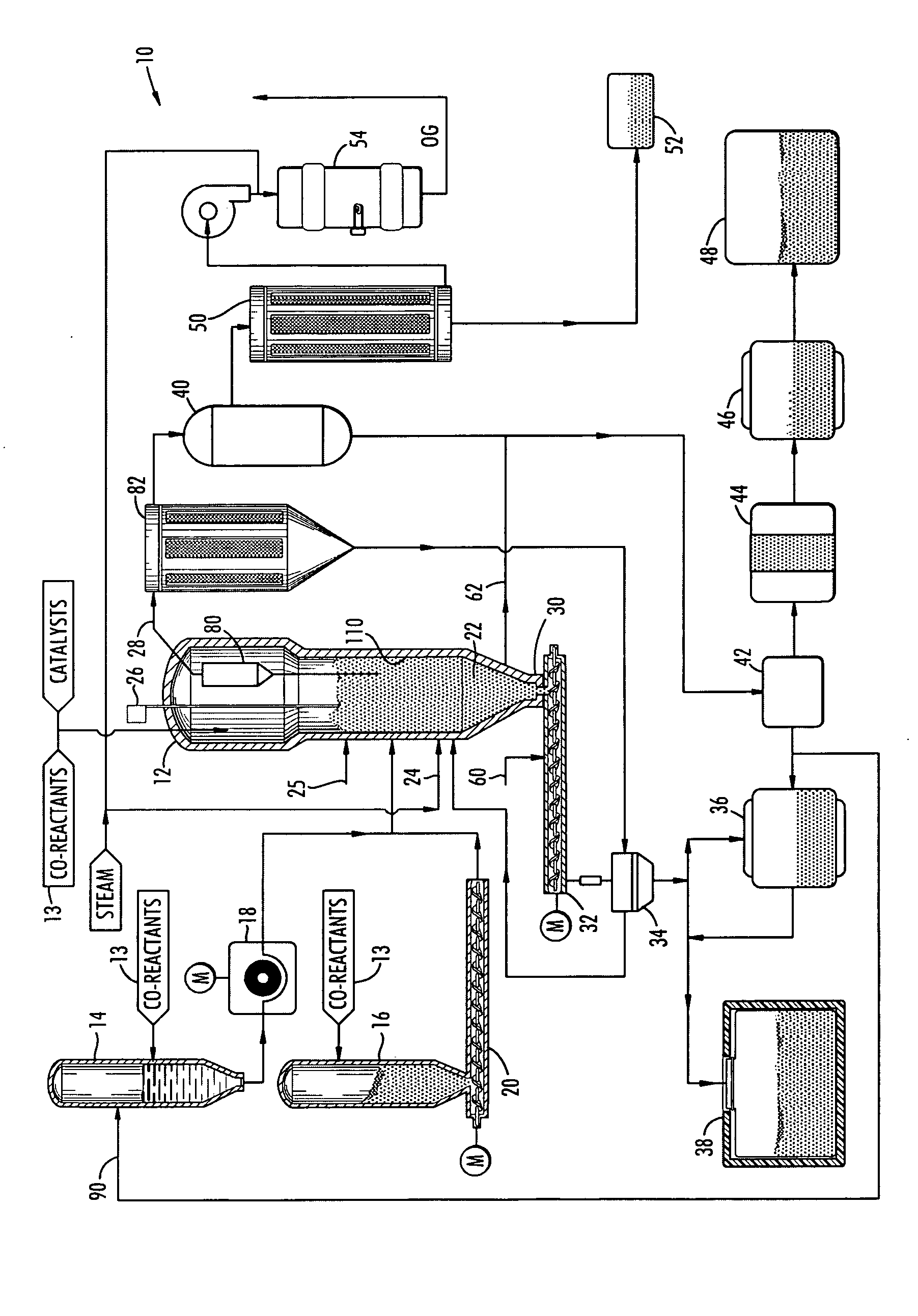Mineralization of alkali metals, sulfur, and halogens
a technology of alkali metals and sulfur, applied in the field of alkali metals, sulfur and halogens, can solve the problems of difficult disposal of hazardous waste materials, high processing costs, and high cost of processes, and achieves the effects of easy disposal and processing, higher melting point compounds, and high melting poin
- Summary
- Abstract
- Description
- Claims
- Application Information
AI Technical Summary
Benefits of technology
Problems solved by technology
Method used
Image
Examples
Embodiment Construction
[0022] The present invention is an apparatus and process for converting alkali metals, sulfur, and halogens into synthetic, naturally occurring minerals. The present apparatus and process will be described in particular with respect to radioactive waste; however, any waste or product stream containing alkali metals, heavy metals, halogens, and / or sulfur can be processed in accordance with the following process and with the components of the system. The waste stream may also contain boron compounds and phosphates, and may have any concentration of alkali metals, sulfur, and / or halogens, and may also contain levels of heavy metals and radionuclides, but, preferably, only contains less than 5% carbonaceous or organic content. Accordingly, the waste feed make up mainly includes non-combustible and non-organic materials. Further, the waste feed can have any pH value, and need not be pre-processed before being introduced into the process.
[0023] The process is based on a fluidizing bed re...
PUM
| Property | Measurement | Unit |
|---|---|---|
| diameter | aaaaa | aaaaa |
| operating temperature | aaaaa | aaaaa |
| diameter | aaaaa | aaaaa |
Abstract
Description
Claims
Application Information
 Login to View More
Login to View More - R&D
- Intellectual Property
- Life Sciences
- Materials
- Tech Scout
- Unparalleled Data Quality
- Higher Quality Content
- 60% Fewer Hallucinations
Browse by: Latest US Patents, China's latest patents, Technical Efficacy Thesaurus, Application Domain, Technology Topic, Popular Technical Reports.
© 2025 PatSnap. All rights reserved.Legal|Privacy policy|Modern Slavery Act Transparency Statement|Sitemap|About US| Contact US: help@patsnap.com

